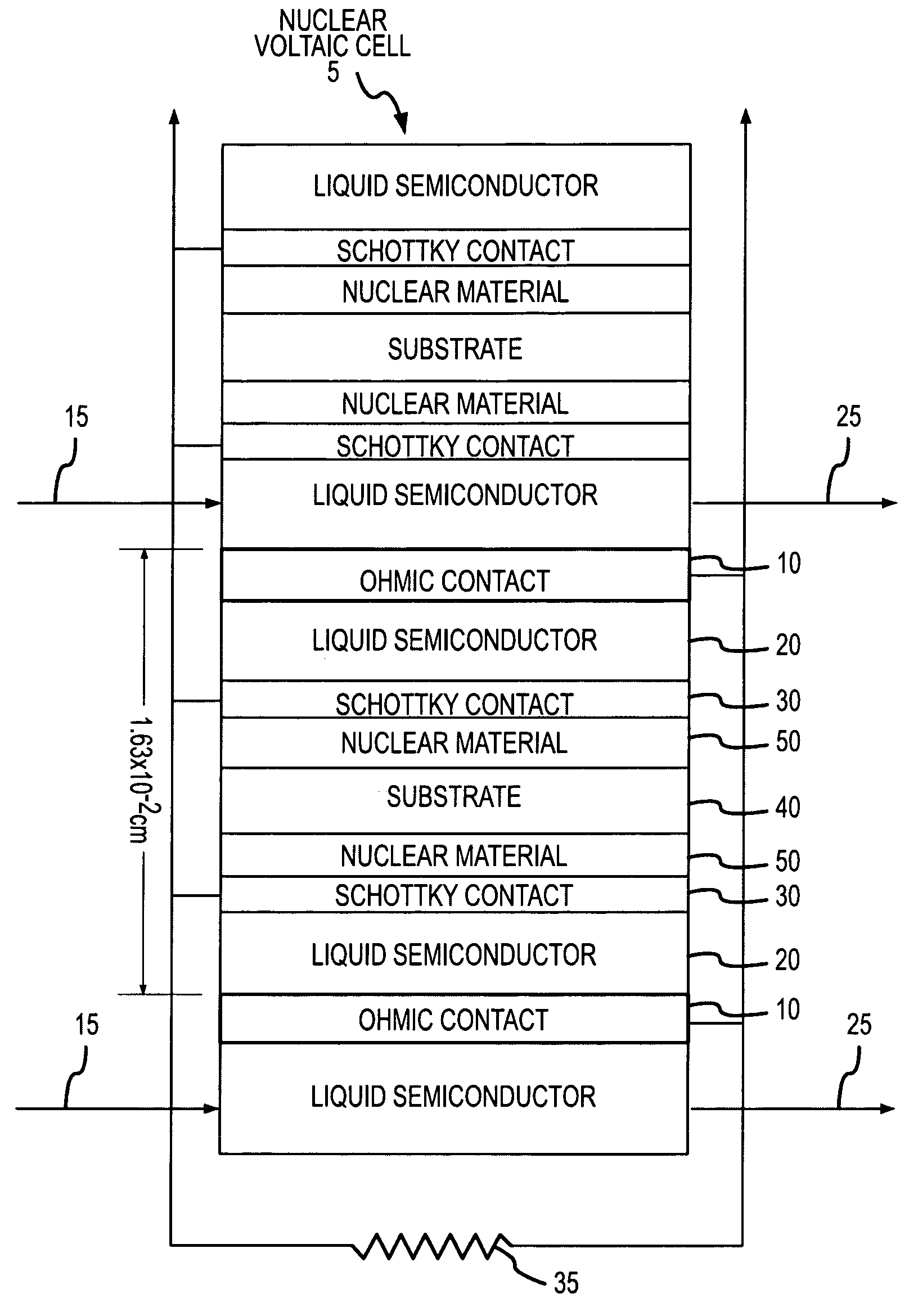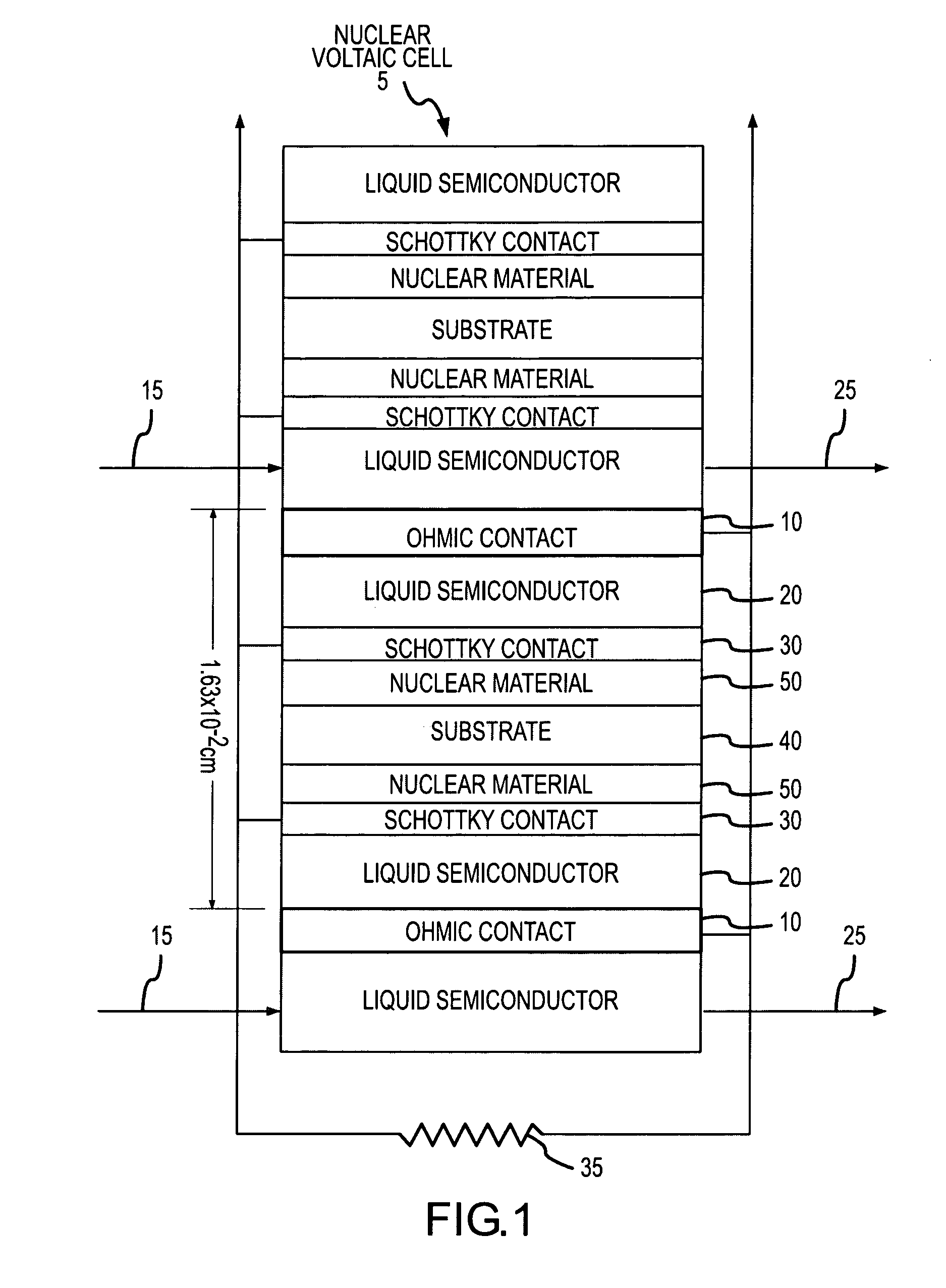Nuclear voltaic cell
a technology of nuclear voltaic cells and voltaic cells, which is applied in the direction of nuclear elements, electric generator control, machines/engines, etc., can solve the problems of no direct conversion method that is efficient and practical, and achieves the effects of small or no maintenance, large electrical energy generation, and small siz
- Summary
- Abstract
- Description
- Claims
- Application Information
AI Technical Summary
Benefits of technology
Problems solved by technology
Method used
Image
Examples
Embodiment Construction
[0057]FIG. 1 shows a cross section through one embodiment of the Nuclear Voltaic Cell 5. In this embodiment, the Liquid Semiconductor 20 is sandwiched between two metal contacts; the Ohmic Contact 10 and the Schottky Contact 30. The device will also function if a low resistance contact is used in lieu of the Ohmic Contact 10. This may be necessary in the case that an ideal Ohmic Contact 10 is not readily available as a result of fundamental or practical reasons.
[0058] As shown in FIG. 1, the Liquid Semiconductor 20 is sandwiched between the two metal contacts, the Ohmic Contact 10 and the Schottky Contact 30. Furthermore, as shown in FIG. 1, the two metal contacts, the Ohmic Contact 10 and the Schottky Contact 30, form a channel through which the Liquid Semiconductor 20 may flow. In a preferred embodiment of the present invention, the Liquid Semiconductor 20 flows in the direction of the Arrow 15 into the channel between the Ohmic Contact 10 and the Schottky Contact 30 and then flo...
PUM
| Property | Measurement | Unit |
|---|---|---|
| average energy | aaaaa | aaaaa |
| average energy | aaaaa | aaaaa |
| nuclear energy | aaaaa | aaaaa |
Abstract
Description
Claims
Application Information
 Login to View More
Login to View More - R&D
- Intellectual Property
- Life Sciences
- Materials
- Tech Scout
- Unparalleled Data Quality
- Higher Quality Content
- 60% Fewer Hallucinations
Browse by: Latest US Patents, China's latest patents, Technical Efficacy Thesaurus, Application Domain, Technology Topic, Popular Technical Reports.
© 2025 PatSnap. All rights reserved.Legal|Privacy policy|Modern Slavery Act Transparency Statement|Sitemap|About US| Contact US: help@patsnap.com



